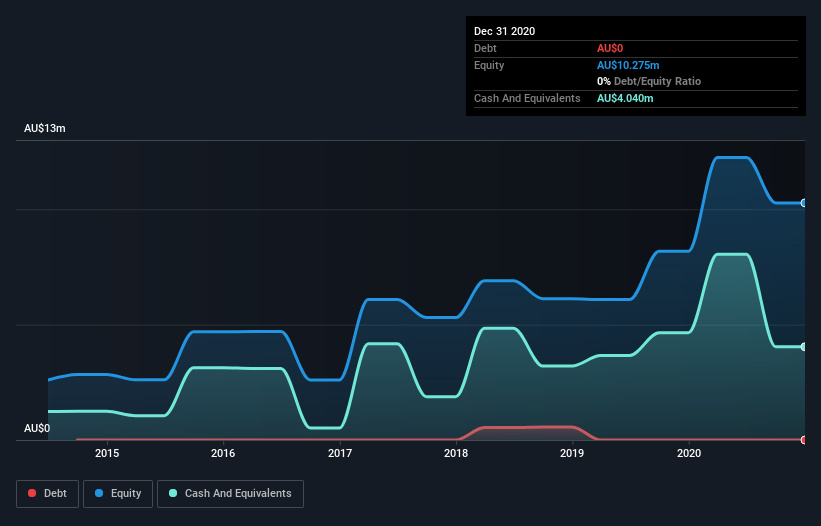Is First Graphene (ASX:FGR) In A Good Position To Invest In Growth?
Just because a business does not make any money, does not mean that the stock will go down. For example, First Graphene (ASX:FGR) shareholders have done very well over the last year, with the share price soaring by 116%. Having said that, unprofitable companies are risky because they could potentially burn through all their cash and become distressed.
In light of its strong share price run, we think now is a good time to investigate how risky First Graphene's cash burn is. In this report, we will consider the company's annual negative free cash flow, henceforth referring to it as the 'cash burn'. Let's start with an examination of the business' cash, relative to its cash burn.
See our latest analysis for First Graphene
Does First Graphene Have A Long Cash Runway?
A cash runway is defined as the length of time it would take a company to run out of money if it kept spending at its current rate of cash burn. In December 2020, First Graphene had AU$4.0m in cash, and was debt-free. In the last year, its cash burn was AU$6.5m. Therefore, from December 2020 it had roughly 7 months of cash runway. That's quite a short cash runway, indicating the company must either reduce its annual cash burn or replenish its cash. Depicted below, you can see how its cash holdings have changed over time.
How Is First Graphene's Cash Burn Changing Over Time?
Whilst it's great to see that First Graphene has already begun generating revenue from operations, last year it only produced AU$299k, so we don't think it is generating significant revenue, at this point. Therefore, for the purposes of this analysis we'll focus on how the cash burn is tracking. It's possible that the 2.6% reduction in cash burn over the last year is evidence of management tightening their belts as cash reserves deplete. First Graphene makes us a little nervous due to its lack of substantial operating revenue. We prefer most of the stocks on this list of stocks that analysts expect to grow.
How Easily Can First Graphene Raise Cash?
Even though it has reduced its cash burn recently, shareholders should still consider how easy it would be for First Graphene to raise more cash in the future. Generally speaking, a listed business can raise new cash through issuing shares or taking on debt. Many companies end up issuing new shares to fund future growth. By comparing a company's annual cash burn to its total market capitalisation, we can estimate roughly how many shares it would have to issue in order to run the company for another year (at the same burn rate).
Since it has a market capitalisation of AU$137m, First Graphene's AU$6.5m in cash burn equates to about 4.7% of its market value. Given that is a rather small percentage, it would probably be really easy for the company to fund another year's growth by issuing some new shares to investors, or even by taking out a loan.
Is First Graphene's Cash Burn A Worry?
On this analysis of First Graphene's cash burn, we think its cash burn relative to its market cap was reassuring, while its cash runway has us a bit worried. We don't think its cash burn is particularly problematic, but after considering the range of factors in this article, we do think shareholders should be monitoring how it changes over time. Separately, we looked at different risks affecting the company and spotted 4 warning signs for First Graphene (of which 3 are a bit concerning!) you should know about.
Of course First Graphene may not be the best stock to buy. So you may wish to see this free collection of companies boasting high return on equity, or this list of stocks that insiders are buying.
This article by Simply Wall St is general in nature. It does not constitute a recommendation to buy or sell any stock, and does not take account of your objectives, or your financial situation. We aim to bring you long-term focused analysis driven by fundamental data. Note that our analysis may not factor in the latest price-sensitive company announcements or qualitative material. Simply Wall St has no position in any stocks mentioned.
Have feedback on this article? Concerned about the content? Get in touch with us directly. Alternatively, email editorial-team (at) simplywallst.com.

 Yahoo Finance
Yahoo Finance 
